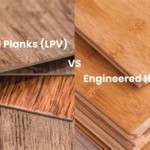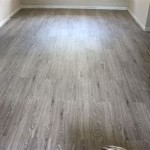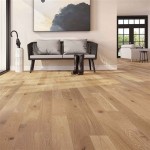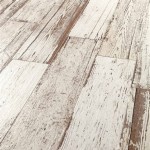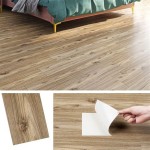Black Wood Filler: Restoring the Richness of Hardwood Floors
Hardwood floors are a sought-after feature in many homes, prized for their aesthetic appeal, durability, and the warmth they bring to interior spaces. Over time, however, even the most well-maintained hardwood floors can develop imperfections. These may include cracks, gaps, scratches, and dents, which can detract from the floor's overall appearance and potentially compromise its structural integrity. Black wood filler offers a solution for addressing these imperfections, particularly in darker-toned hardwood floors where lighter fillers can be visually jarring.
The purpose of this article is to provide a comprehensive overview of black wood filler for hardwood floors. It will explore the types of wood filler available, the selection process, application techniques, and post-application procedures to ensure a seamless and enduring repair. The focus will be on providing practical information and guidance to empower homeowners and professionals in effectively restoring the beauty of their hardwood floors.
Understanding the Types of Wood Filler
Wood filler is a substance used to fill voids, cracks, and other imperfections in wood surfaces. Several different types of wood filler are available, each with unique properties and applications. Understanding the differences is crucial for selecting the appropriate filler for a given hardwood floor repair.
Water-Based Wood Filler: Water-based wood fillers are primarily composed of wood fibers and a water-based binder. These fillers are generally low in odor, easy to clean up with water, and sand easily. They are suitable for filling small to medium-sized imperfections and are often preferred for interior applications. However, water-based fillers may shrink slightly as they dry, potentially requiring multiple applications to achieve a perfectly level surface. They are also typically less durable than solvent-based options and may not be ideal for areas subject to heavy traffic or moisture exposure.
Solvent-Based Wood Filler: Solvent-based wood fillers utilize a solvent-based binder, making them more durable and resistant to moisture compared to water-based alternatives. They also tend to shrink less during the drying process. The robust nature of solvent-based fillers makes them suitable for larger repairs and high-traffic areas. However, they often have a stronger odor and require the use of solvents for cleanup. Proper ventilation is essential when working with solvent-based fillers. Additionally, some solvent-based fillers may be more difficult to sand than water-based options.
Epoxy Wood Filler: Epoxy wood fillers are two-part systems consisting of a resin and a hardener. When mixed, these components chemically react to form a very strong and durable bond. Epoxy fillers are exceptionally resistant to moisture, chemicals, and impact damage, making them ideal for repairing severely damaged wood, including rotted or decayed areas. They are also less prone to shrinking or cracking than other types of wood filler. However, epoxy wood fillers are generally more expensive and require careful mixing and application according to the manufacturer's instructions. They can also be more difficult to sand and may require specialized tools.
Grain Fillers: Although technically not wood fillers in the traditional sense, grain fillers are used to fill the open pores of certain types of wood, such as oak or ash, to create a smooth, even surface before applying a finish. Grain fillers are typically available in liquid or paste form and can be tinted to match the color of the wood. While not designed for filling cracks or gaps, grain fillers are essential for achieving a professional-looking finish on open-grained hardwood floors.
For the specific purpose of addressing imperfections in darker hardwood floors, black wood filler is most commonly available in water-based, solvent-based, and epoxy formulations. The choice of which type to use depends on the size and nature of the repair, the desired level of durability, and the user's preference for ease of application and cleanup.
Selecting the Right Black Wood Filler
Choosing the appropriate black wood filler is crucial for achieving a seamless and aesthetically pleasing repair on hardwood floors. Several factors should be considered during the selection process, including color matching, the size and type of imperfection, and the compatibility of the filler with the existing floor finish.
Color Matching: The most important consideration when selecting black wood filler is to ensure a close match to the color of the hardwood floor. While true black wood filler is available, many dark hardwood floors have subtle variations in tone and hue. It may be necessary to mix different shades of black or add small amounts of other pigments to achieve a perfect match. Some manufacturers offer tinted wood fillers or allow for custom tinting to ensure optimal color blending. It is recommended to test the color of the filler on a small, inconspicuous area of the floor before applying it to the damaged area. Allow the filler to dry completely to assess the final color match.
Size and Type of Imperfection: The size and nature of the imperfection will influence the type of wood filler that is most suitable. For small cracks and nail holes, a water-based or solvent-based filler may suffice. For larger gaps or areas of missing wood, an epoxy wood filler is generally recommended due to its superior strength and durability. Deep gouges may require multiple applications of filler to avoid excessive shrinkage and ensure a solid repair. Consider the structural requirements of the repair when selecting the appropriate filler.
Compatibility with Existing Finish: It is essential to ensure that the selected wood filler is compatible with the existing finish on the hardwood floor. Some fillers may not adhere properly to certain types of finishes, such as oil-based polyurethane or wax finishes. Incompatible fillers can lead to adhesion problems, cracking, or discoloration. Refer to the manufacturer's instructions for the wood filler and the floor finish to verify compatibility. If necessary, consult with a flooring professional to determine the appropriate filler for the specific type of finish.
Sanding Properties: The sandability of the wood filler is another important consideration. Fillers that are difficult to sand can create uneven surfaces and require excessive effort to blend seamlessly with the surrounding wood. Water-based fillers are generally easier to sand than solvent-based or epoxy fillers. However, the hardness of the wood and the type of sanding equipment used will also influence the ease of sanding. Choose a filler that is known for its good sanding properties to minimize the risk of creating an uneven or unsightly repair.
Drying Time and Shrinkage: Different types of wood filler have varying drying times and shrinkage rates. Water-based fillers tend to dry faster but may shrink more than solvent-based or epoxy fillers. Epoxy fillers generally have the lowest shrinkage rate but may require longer drying times. Consider the drying time and shrinkage rate when planning the repair, especially if multiple applications are required. Allow the filler to dry completely according to the manufacturer's instructions before sanding or applying a finish.
Applying Black Wood Filler for Optimal Results
Proper application of black wood filler is essential for achieving a durable and visually appealing repair on hardwood floors. The following steps outline the recommended procedure for applying wood filler:
Preparation: Thoroughly clean the area to be filled, removing any loose debris, dirt, or old finish. Use a brush, vacuum cleaner, or damp cloth to ensure a clean surface. If necessary, lightly sand the edges of the damaged area to create a smooth transition. For deep cracks or holes, consider using a utility knife or chisel to remove any loose or crumbling wood. A clean and stable surface will promote better adhesion of the wood filler.
Mixing (if applicable): For two-part epoxy fillers, carefully mix the resin and hardener according to the manufacturer's instructions. Use the specified ratio of components to ensure proper curing and bonding. Avoid mixing too much filler at once, as epoxy fillers have a limited working time. For pre-mixed fillers, stir the filler thoroughly to ensure a uniform consistency. If tinting the filler, add small amounts of pigment until the desired color is achieved, mixing thoroughly after each addition.
Application: Use a putty knife or trowel to apply the wood filler to the damaged area. Press the filler firmly into the crack or hole, ensuring that it fills the entire void. Overfill the area slightly to allow for shrinkage during drying. For deep imperfections, apply the filler in thin layers, allowing each layer to dry completely before applying the next. This will minimize shrinkage and prevent cracking. Avoid applying too much pressure, which can damage the surrounding wood.
Shaping and Smoothing: Once the filler has been applied, use the putty knife to shape and smooth the surface. Remove any excess filler and create a smooth transition between the filler and the surrounding wood. For narrow cracks, use a thin putty knife or a flexible applicator to reach into the crevice. If necessary, dampen the putty knife with water to prevent the filler from sticking. The goal is to create a surface that is slightly above the level of the surrounding wood, allowing for sanding to achieve a perfectly flush finish.
Drying: Allow the wood filler to dry completely according to the manufacturer's instructions. Drying times vary depending on the type of filler, the temperature, and the humidity. Avoid disturbing the filled area during the drying process. Premature sanding or finishing can result in an uneven or unstable repair. It is generally recommended to allow the filler to dry for at least 24 hours before proceeding with sanding.
Sanding: Once the filler is completely dry, sand the surface to create a smooth, flush finish. Start with a medium-grit sandpaper (e.g., 120-grit) to remove any excess filler and level the surface. Then, switch to a fine-grit sandpaper (e.g., 220-grit) to smooth out any scratches and create a seamless transition. Sand in the direction of the wood grain to avoid creating cross-grain scratches. Use a sanding block or orbital sander for larger areas. Take care not to sand away the surrounding wood, which can create an uneven surface. Regularly clean the sanding dust to assess the progress and ensure a consistent finish.
Finishing: After sanding, the repaired area may need to be stained or finished to match the surrounding floor. Use a stain that is compatible with the existing finish and apply it evenly to the filled area. Allow the stain to dry completely before applying a topcoat of finish. Apply multiple coats of finish, allowing each coat to dry thoroughly between applications. Lightly sand between coats of finish to create a smooth, even surface. The goal is to create a repair that is virtually indistinguishable from the surrounding floor.
By following these steps, it is possible to effectively apply black wood filler to repair imperfections in hardwood floors and restore their original beauty. Proper preparation, careful application, and thorough sanding are essential for achieving a durable and visually appealing repair.
Black Wood Filler Lumberjocks Woodworking Forum

Filler Facts Wood Isn T Always The Right Solution Rosebud Floors

Woodfiller For Hardwood Floors Advice

Woodfiller For Hardwood Floors Advice
Dealing With Gunk In The Gaps Old Hardwood Floors Washington Post

Woodfiller For Hardwood Floors Advice

Wood Floor Filler Hardwood Putty Panel Town Floors

Should You Fill Gaps On A Timber Floor

The Benefits Of Wood Filler Are Greatly Exaggerated Hardwood Flooring Experts Petes Floors

Roberts 3 Oz Dark Brown Wood Laminate And Vinyl Putty Pc7732 The Home
